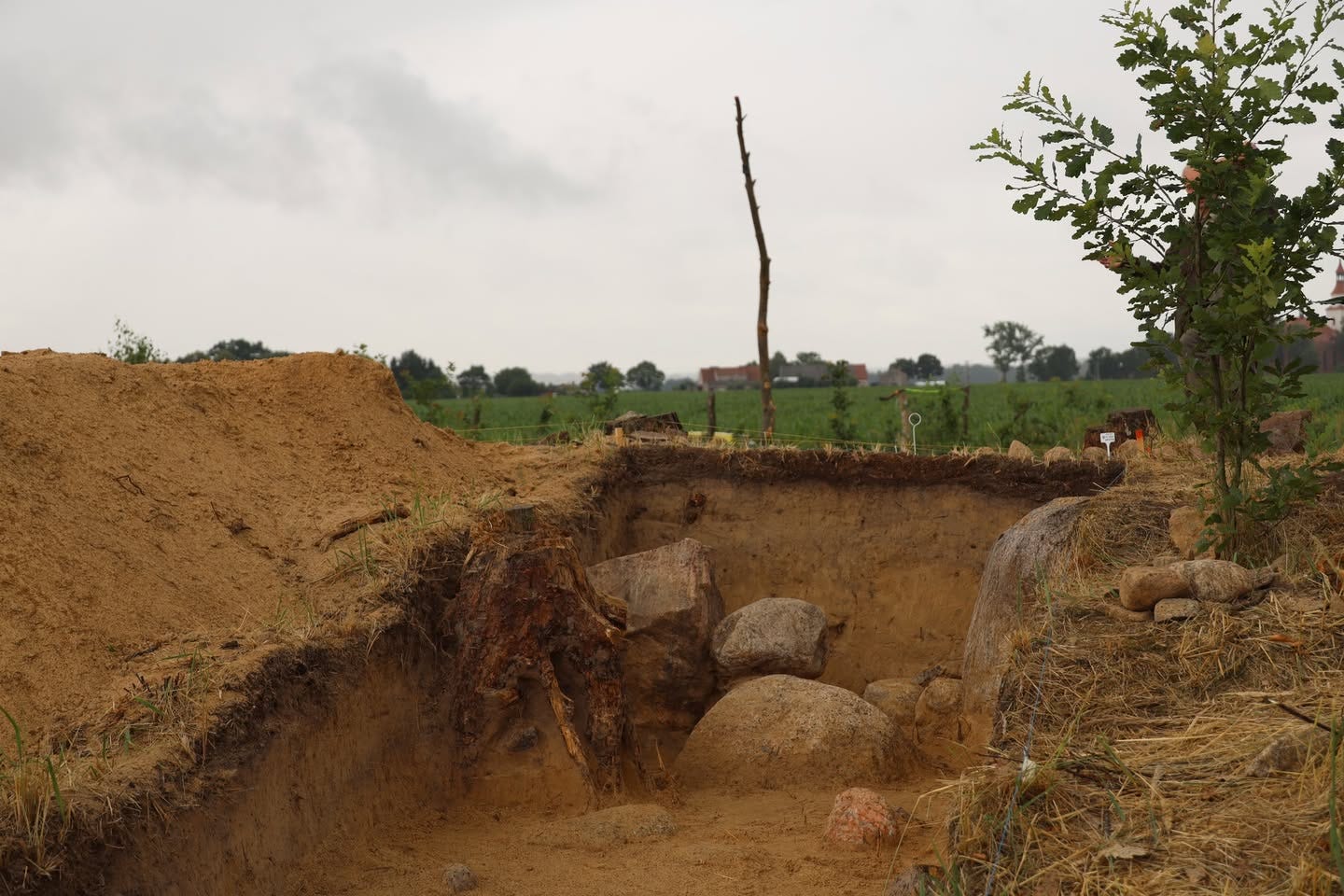🧐 Ancient Beat #158: Polish pyramids, Celtic oppida, and a really big feasts
Hi folks! Welcome to issue #158 of Ancient Beat!
There’s a storm rolling through as I write this and… bear with me here… Is it weird that there are different words for thunder and lightning? Seems weird.
Or maybe it isn’t weird. Maybe it’s just early and coffee is calling my name.
But I digress. Here’s the latest ancient news. 👇
🗞 Ancient News: Top 5
11,000-Year-Old Feast in Iran’s Zagros Mountains Reveals Long-Distance Animal Transport and Early Neolithic Social Rituals — Excavations at the Early Neolithic site of Asiab in Iran’s Zagros Mountains uncovered a large circular structure—about 66 ft across—containing the remains of 19 wild boars, along with brown bear bones and red deer antlers. Dating to around 9,000 BCE, this site hosted a massive feast involving animals transported from up to 45 miles away, over rugged terrain. Tooth enamel and isotope analysis confirmed their distant origins. The estimated 1,500 pounds of meat could have fed hundreds, suggesting the event was a communal or symbolic gathering. The discovery marks the earliest known example of large-scale food transport for ritual use, predating agriculture and domestication. Rather than simple subsistence, the feast likely reinforced social ties and collective identity, setting the stage for more complex social systems that would support the emergence of settled farming communities. Man, I’d love to be a fly on the wall at that feast!
Major Celtic Settlement Discovered in Czech Republic — A vast Celtic oppidum covering some 65 acres has been uncovered near Hradec Králové, dating back to the La Tène period (roughly 450 BCE to 1 BCE). The site stands out as at least ten times larger than typical regional contemporaries, suggesting it served as a major economic and administrative hub for the Boii tribe along the ancient Amber Road. Archaeologists recovered over 13,000 artifacts—gold and silver coins, amber items, ceramic shards, pottery kilns, glass workshops, coin molds, and a rare horse‑engraved pot fragment—highlighting advanced craftsmanship, extensive trade connections, and the presence of dedicated production zones.
New Evidence Alludes to Military Conflict at Ancient Troy — Excavations at the ruins of Troy (in modern Turkey) have uncovered fresh clues hinting that the Bronze Age city—dating to ca. 1300–1200 BCE—experienced a violent episode. Researchers identified remains of thick, defensive stone walls along with signs of destruction by fire and collapsed masonry within Level VIIa, which spans an area possibly covering 50 acres and housing around 7,000 inhabitants. These finds align with historical texts from Hittite archives mentioning “Wilusa” and references to Achaeans (ancient Greeks) engaging in conflict in western Anatolia. Additionally, Troy VI–VIIa’s extensive fortifications and evidence of a sudden, catastrophic event parallel aspects of the legendary Trojan War. While the connection to Homeric legend remains speculative, the combined archaeological and textual evidence strongly suggests a military episode occurred at the site.
Carved Human Face Found in Polish Lake — A 1.34 m (4.4 ft) long oak beam was discovered submerged in Lake Lednica, Poland, bearing a carved human face measuring approximately 13.5 × 10 cm (5 × 4 in). Dendrochronology dates the timber to around 967 CE, during Poland’s shift from Slavic paganism to Christianity. Likely used as a structural beam, the carved face was placed on the exterior of a fortification, facing the water. This sculpture is a rare surviving example of early medieval ritual or symbolic art—its orientation suggests it may have been intended to ward off spirits or mark a boundary.
5500‑Year‑Old Polish Pyramids Discovered in Western Poland — Hidden within Chłapowski Landscape Park near Wyskoć, giant trapezoidal earth‑and‑stone tombs—some stretching about 656 ft long and rising roughly 13 ft tall—date to ~3500 BCE. Crafted by the Funnelbeaker Culture, these monumental megaliths feature wide eastern fronts tapering to narrow western ends and are aligned eastward. Originally capped with cobbles and massive boulders (some ~10 tons), they once housed a single upright burial—likely a leader or shaman—along with grave goods such as pottery, stone axes, and possibly opium vessels. Though bones were not found in the most recent discovery, further excavation may yield artifacts that illuminate early Neolithic social organization, ritual practices, and astronomical awareness. “Pyramid” seems like a stretch, but super cool regardless.
That’s it for the free Top 5! If you’re a free subscriber, sign up for the paid plan for another 30 discoveries and 33 recommended pieces of content covering rulers, rock art, and the Antikythera shipwreck.
Until next time, thanks for joining me!
-James
Twitter: @jamesofthedrum
P.S. Here’s my Buy Me A Coffee link if you’d like to support my efforts with a donation.
P.P.S. If you want access to the paid version but it’s a little too steep for you right now, just email me — I want this to be accessible.
P.P.P.S. Paid members, read on!
🗞 Ancient News: Deep Dive
Keep reading with a 7-day free trial
Subscribe to Ancient Beat to keep reading this post and get 7 days of free access to the full post archives.


